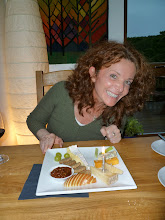The Road to Hell (Part 1)
By far, the most difficult part about moving to the U.K. has been learning how to drive. I know you’re thinking: “Don’t you already know how to drive? Isn’t it just a matter of getting used to driving on the other side of the road?” This is certainly the most obvious difference, but not nearly as painful to get used to as some of the others I’ve encountered. Below are what I would consider to be my three greatest challenges:
- Roundabouts: A roundabout replaces stop signs or stoplights at an intersection. If you saw an aerial view of one, it would look like a child’s drawing of the sun. You always enter a roundabout on the left, while the vehicles already on it are coming at you from the right. Wikipedia has some great illustrations and photos. en.wikipedia.org/wiki/Roundabout
Roundabouts are everywhere and come in all sizes, from mini-roundabouts that are just painted circles on the ground, to massive, multiple-lane roundabouts containing several stoplights within them. The mixing of roundabouts and stoplights puzzles me: since roundabouts are supposed to keep traffic flowing and stoplights intermittently stop it from flowing, then why not just have the stoplights?
I find them upsetting for a couple of reasons. First, you need to figure out which of several exits to take by quickly reading a sign just before you enter. This gets even trickier in Wales, where the exits are listed in both Welsh and English. Then, once you're on the roundabout, you have to choose just the right moment to cross one or more lanes in order to exit without crashing into anybody. I thought I was going to have a coronary the first time I drove on a large one.
A few roundabouts exist in the U.S., but from what I understand, they’re really more like traffic circles than roundabouts. baconsrebellion.blogsot.com/2006/05/in-praise-of-roundabouts.html - Narrow Roads: Since many of the roads have been here for centuries and were originally built for horse-drawn carriages (or just pedestrians), they have no extra space for street parking, which means that vehicles are always parked in the lane you’re driving in and you have to continually maneuver around them. Side streets are often only wide enough for one vehicle to get through (usually because of parked vehicles on one or both sides) so you have to wait for oncoming vehicles and vice versa. I’ve even driven on country lanes where I’ve had to back up several yards to allow the car coming toward me to pass.
- Street Furniture: This is what American author, Bill Bryson, calls the inordinate amount of signage cluttering U.K. roads. www.english-heritage.org.uk/server/show/ConWebDoc.5411 It’s as if Brits tried to cover every possible or potential hazard that might befall an unsuspecting driver in virtually every weather condition known to man. At first, I constantly worried that I was missing something important until I got to know which signs were actually helpful and which were just telling me what I already knew.
 Keep an eye out for low-flying planes.
Keep an eye out for low-flying planes. Be careful not to run aground.
Be careful not to run aground. Choo-choo Xing.
Choo-choo Xing. Try not to drive off the bridge.
Try not to drive off the bridge.In all fairness, the Brits I know who’ve driven in the U.S. said that, although they loved the wide roads, they found the lack of signage disconcerting and couldn’t fathom the idea of turning on a red light. I guess it really comes down to what you’re used to.


0 Comments:
Post a Comment
<< Home